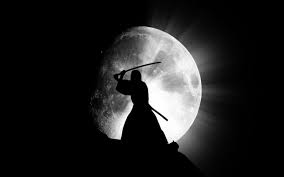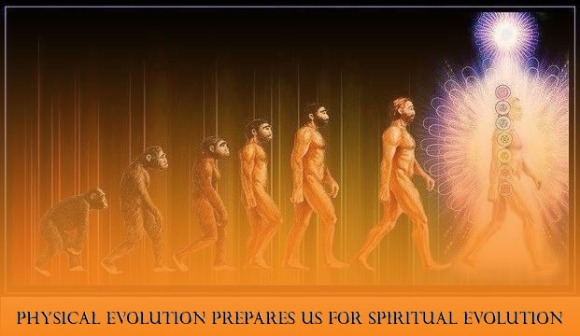I’d been meditating from the age of 12, and over the years had heard rumours and whispers of some mysterious place in the body that, when found and activated, was capable of unlocking the untapped potential of the human mind, catapulting the meditator into states of inner bliss, where he/she would experience oneness with all things. Since I first heard of its existence, I thought such a point was nothing more than a myth, just another story told to encourage spiritual seekers to stay on their path. That was until, as if by some strange twist of fate, at the age of 26, I experienced the effects of this point directly for myself.
It is said in the ancient Yogic texts of India that when the spiritual force, called Kundalini, rises up through the body, the tongue rolls back and the eyes turn in as the spiritual eye opens and the yogi enters through the door of Brahman to realise his/her true self. Ok, so that’s all a bit esoteric. Let’s see if we can get our heads around what I just wrote by changing our perspective and looking at it in terms of reverse engineering the body and mind.
Reverse engineering the awakened mind
As the mind begins to expand and wake up, its physical counterpart, the brain, goes through many structural and functional changes in a process called neuroplasticity. While these changes are happening in the brain, the body responds by changing and refining its own biological processes. As Yogis and Yoginis of the past went through the natural awakening process, catalysed by their meditative practices, they noticed many physical phenomena occuring in their body, phenomena that were caused by changes in their brain. Yogis, understanding that the brain and body are interconnected and comunicating in a two way process, realised that just as the awakened brain can change the body, an awakened body could just as effectively change the brain and, incidentally, trigger the expansion of the mind. It was from this understanding that the physical sciences of yoga were born.
So what are the physical body symptoms of an awakened mind? Well, the list is long, far too long for a single blog post, so instead of listing and explaing them all, I’ll name a few important ones and then focus on one that’s particularly significant to the awakening process. The following are a few important awakening symptoms of the physical body:
- Spontaneous postures (asanas) and hand positions (mudras).
- Severe, spontaneous changes in breathing patterns, ranging from rappid to extremely slow respiratory cycles.
- Complete cessation of the breathing cycle for long periods of time.
- Extreme changes in body temperature.
- Spontaneous internal muscle contractions, called Bandhas.
Of all these symptoms, the one I’ll look at here is the spontaneous, internal muscle contractions called Bandhas. There are many Bandhas that have been recognised by traditional Yoga as vital ellements to the awakening process. The most important of these are Moola Bandha (contraction of the perineal muscles), Uddiyana Bandha (Contraction of the abdominal muscles), Jalandhara Bandha (contraction of the neck muscles), Kechari mudra (contraction of the tongue), and Shambavi mudra (contraction of the eyes). And of these, it is said that Kechari mudra is the king.
As the nervous system undergoes cleansing and physical changes, various muscle groups within the body are stimulated to contract in very specific ways. These contractions are what I’ve described as the Bandhas, above. As the bandhas are engaged, various parts of the brain and, therefore, mind are stimulated, which, over time, leads to expanded states of awareness.
Kechari Mudra
Kechari mudra, described as king of the mudras, is the name used to describe a peculiar phenomenon in which the tongue moves back, behind the soft palate, and up into the nasal cavity where it rests against a point on the septum, otherwise known as the door of Brahman. It is this point on the septum that can catapult the yogi/yogini into super conscious states of extasy and bliss.
A personal experience of Kechari Mudra
My experience of Kechari was a spontaneous one. But I’ve already described that experience in my previous post. So instead of writing it out again, let me talk about the after effects of the Kechari experience.
For months after my initial awakening, my tongue would spontaneously move into the kechari mudra position. During these mini awakening episodes, which often lasted for half an hour or more, I experienced dream like states accompanied by wave after wave of blissful, orgasmic energy washing over my body. All of these effects are great when in the safety of a meditation room, but not so safe, as I would come to realise, when they happen in the outside world. While in those dream like states, there were many occasions where I was brought back to my normal senses by the distant sound of a car horn, to find myself wandering across a busy road.
After a few months of spontaneous Kechari, I gained control over it, and was able to apply it at will. But by this time I’d gotten used to the energy flow it induced and was able to function normally while in an uplifted state of awareness.
Some of the other notable things triggered by the practice of Kechari only began to kick in at a later stage, about six months after I first experienced it. One such effect was the unusual but definite connection made between my head and genitals. This was experienced as a type of orgasm. When my tongue entered the nasal cavity to touch the door of Brahman, it triggered a spasm of my perineal muscles. This would last for as long as I left my tongue in that position, and was enhanced by turning my eyes inward to look up at the location of my thrd eye. For all you knowledgable Yogis, this perineal muscle spasm is a dynamic form of moola Bandha, but very subtle and completely unforced.
Accompanying the activation of my perineal muscles was another unusual spasm, which I haven’t been able to find a name for in Yogic scriptures. This was the spasm of my soft pallet, which would contract and pulsate around the base of my tongue as my breathing slowed and almost came to a full stop.
The accumulated sensation of the kechari mudra practice was what I can only describe as a brain orgasm. This effect resulted in deep states of bliss and inner tranquility which continues to overflow into my surroundings to this day. Ultimately, Kechari leads to a feeling of connectedness to all beings and an ensuing feeling of love towards them.
In my next post, I’ll look at some of the other effects of Kechari Mudra and explore its connection to the path of the warrior. Plus, I’ll see if I can upload a short video clip of myself demonstrating Kechari mudra 😉
HAPPY NEW YEAR, AND MUCH LOVE TO ALL OF YOU AND YOUR FAMILIES 🙂
P.S, The image in this post was taken from www.sanatanamitra.com



